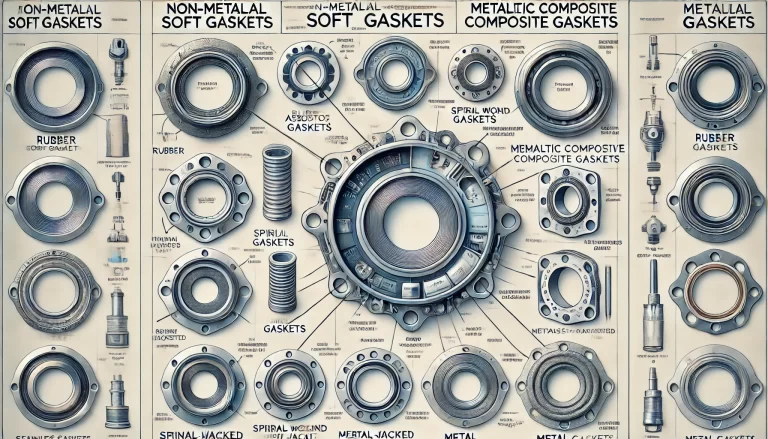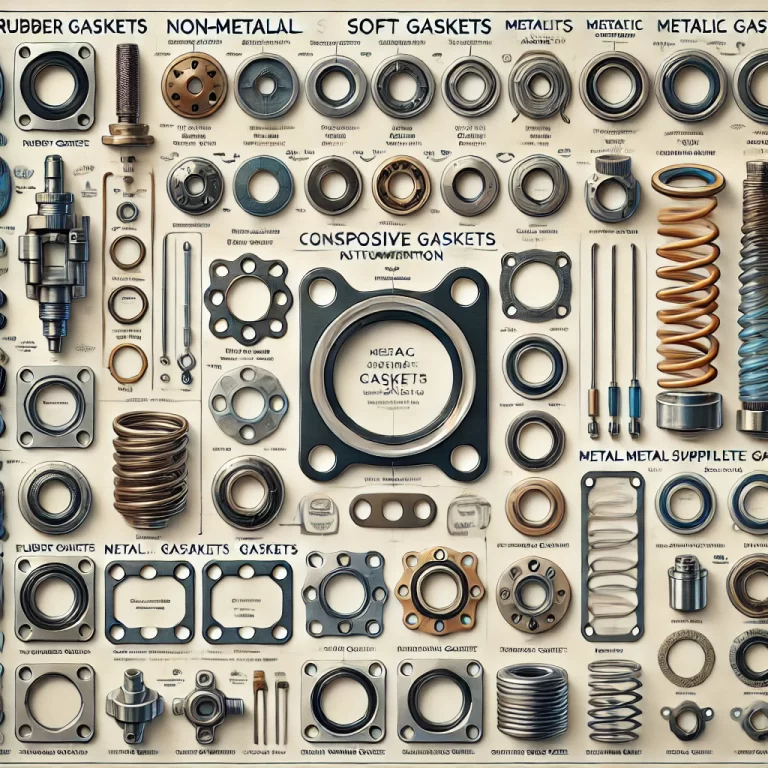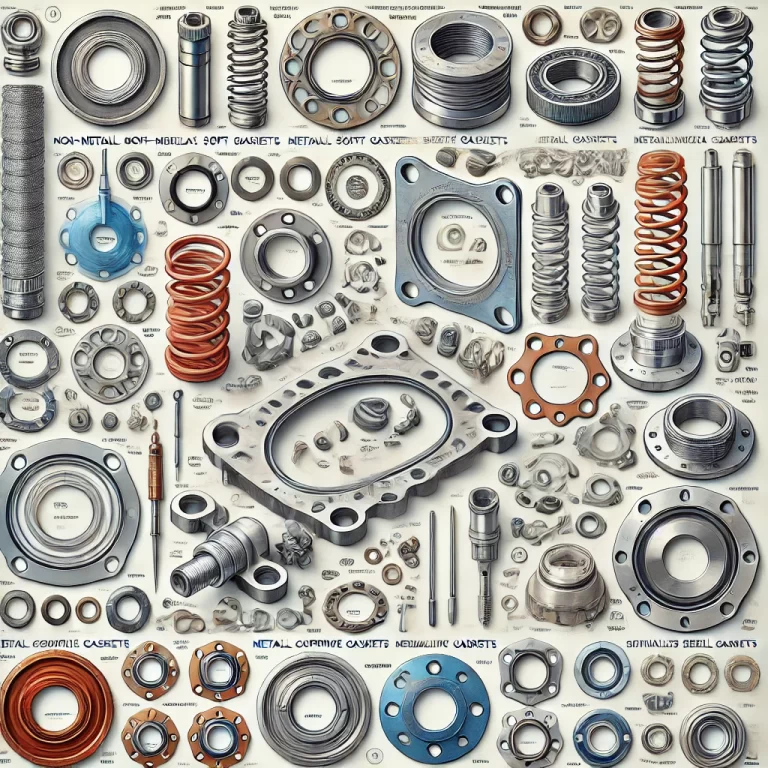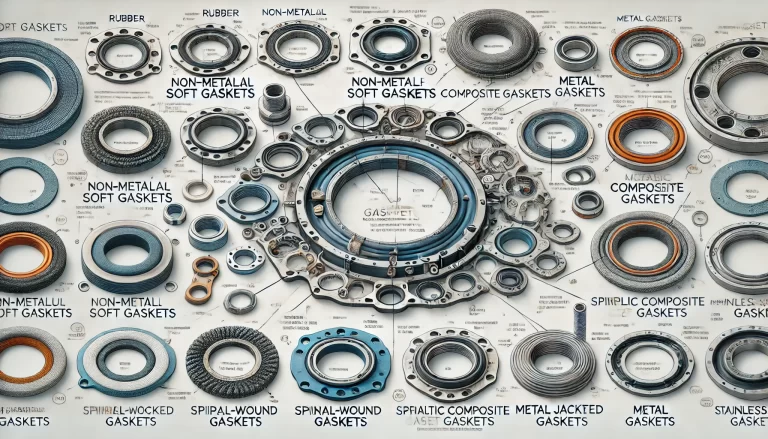Selecting the right gasket for instrumentation is critical to ensuring proper sealing and reliability. The choice depends on specific application conditions, including temperature, pressure, and the type of medium. This guide provides detailed information on commonly used gaskets and their performance under various conditions.

Classification of Common Instrument Gaskets
Instrument gaskets can be classified into three main categories based on material:
1. Non-Metallic Soft Gaskets
These gaskets are made from flexible materials and are best suited for applications with moderate temperature and pressure. Examples include:
Rubber Gaskets: Affordable and corrosion-resistant but have limited resistance to high temperature and pressure.
Asbestos Rubber Gaskets: Offer better sealing performance in medium-pressure applications but are less commonly used due to health concerns.
Non-Asbestos Fiber Rubber Gaskets: A safer alternative to asbestos, providing moderate thermal and pressure resistance.
PTFE (Polytetrafluoroethylene) Gaskets: Resistant to most chemicals but suitable only for low-pressure and low-temperature environments.
PTFE-Coated Gaskets: Combines PTFE’s chemical resistance with enhanced sealing capability.
2. Metallic Composite Gaskets
Metallic composite gaskets combine the strength and resilience of metals with softer materials for enhanced sealing properties. Examples include:
Metal Spiral Wound Gaskets: Provide excellent sealing under conditions of fluctuating pressure and temperature.
Metal-Toothed Flexible Graphite Gaskets: Highly effective in high-temperature environments but require proper handling to avoid damage.
Metal Jacketed Gaskets: Incorporate a soft filler for better sealing, suitable for high-temperature applications.
Metal Serrated Composite Gaskets: Suitable for extreme conditions, offering superior sealing and durability.
3. Metallic Gaskets
These are made entirely of metals and are ideal for demanding environments:
Copper Gaskets: Known for their malleability and excellent sealing in high-pressure and high-temperature applications.
Stainless Steel Gaskets: Provide exceptional corrosion resistance and mechanical strength, often used in cyclic operations.

Performance of Instrument Gaskets Under Different Conditions
The performance of a gasket is highly dependent on its material and operating conditions. Below is an overview of common gasket materials and their characteristics:
1. Asbestos Board or Aluminum Sheet Gaskets
Temperature Range: Below 80°C
Pressure Range: Up to 2 MPa
Performance: Effective sealing for low-temperature, low-pressure applications but unsuitable for harsh environments.
2. Annealed Copper Gaskets
Temperature Range: Up to 800°C
Pressure Range: 2.0 MPa to 42 MPa
Performance: Excellent sealing properties due to annealing, which prevents cracking and porosity.
3. PTFE Gaskets
Temperature Range: Below 150°C
Performance: Excellent chemical resistance and sealing in low-temperature conditions but poor high-temperature tolerance.
4. Graphite Gaskets
Temperature Range: Above 150°C
Performance: Exceptional resistance to high temperatures but may lose sealing capability under extreme pressure.
5. Metal Spiral Wound Gaskets
Applications: Ideal for scenarios with stress relaxation and fluctuating pressures and temperatures.
6. High-Temperature Coated Gaskets
Temperature Range: Over 1000°C
Performance: Designed for extreme environments but may have lower gas tightness and prone to filler degradation.
7. Stainless Steel Gaskets (304/316)
Temperature Range: Up to 760°C
Performance: High resistance to corrosion and creep but relatively expensive.
8. Nylon Gaskets
Performance: Provide good elasticity and recovery for moderate pressure and temperature applications but are not suitable for extreme conditions.

Recommendations for Practical Applications
To choose the right gasket, consider the following guidelines:
Understand Operating Conditions:
Identify the temperature, pressure, and medium involved in the application.
Determine if the environment involves frequent cycling or extreme fluctuations.
Match Material Properties:
Use non-metallic gaskets for moderate conditions.
Opt for metallic composite gaskets when higher strength and sealing are needed.
Select full-metal gaskets for the most demanding conditions.
Evaluate Long-Term Performance:
Consider durability, maintenance requirements, and compatibility with the medium.

Conclusion
Selecting the right gasket is essential for maintaining the integrity and reliability of instruments. By understanding the unique properties of different gasket materials and their performance in various conditions, users can make informed decisions that enhance operational efficiency and safety. Utilize the information in this guide to choose the best gasket for your specific needs.
